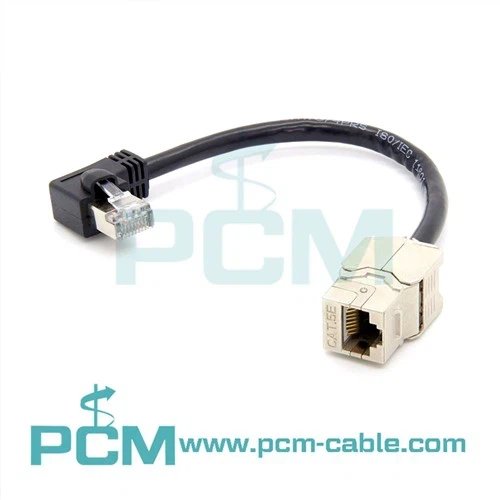What are RJ12 and RJ11?
Firstly, let's briefly introduce what RJ12 and RJ11 are and what they are typically used for.
- RJ11 connector
RJ11 connector is a common telephone connector commonly used to connect telephone lines to fax machines, modems, telephones, and other devices related to telephone communication. RJ11 connectors typically have 6 positions and 6 metal pins, which are used to transmit audio signals and support standard telephone communication. RJ11 connectors are typically equipped with 6-core cables, each of which is typically used to transmit different signals.
- RJ12 connector
The RJ12 connector is very similar to the RJ11 connector, but it has more pins and positions. Usually, RJ12 connectors have 6 positions, but 4 of them are metal pins used for signal transmission, and the other 2 are reserved positions. RJ12 is usually equipped with 6-core cables, but only 4 of them are used for signal transmission, while the remaining 2 cores are retained.
The main differences between RJ12 and RJ11
Now, let's take a look at the main differences between RJ12 and RJ11, which will help us understand when RJ12 can be used instead of RJ11.
- Number of pins
The most obvious difference is that the RJ12 connector has more pins and positions. RJ11 connectors typically have 6 positions and 6 pins, while RJ12 connectors have 6 positions but only use 4 pins.
- purpose
RJ11 connectors are mainly used for telephone communication, while RJ12 connectors are typically used in some specialized communication devices, such as ISDN (Digital Integrated Services Digital Network) and analog telephone systems. Therefore, RJ12 is typically used in applications that require more signal lines, while RJ11 is typically used for standard telephone communication.
- Linear sequence
The wire sequence of RJ11 and RJ12 is also different. In RJ11 connectors, the commonly used wire sequence is the standard 6P2C (6-position 2 pin), while in RJ12 connectors, the commonly used wire sequence is 6P4C (6-position 4 pin).
- Reserve pins
In the RJ12 connector, there are 2 reserved positions that are usually not used. This is different from the RJ11 connector, where each pin is used to transmit signals. This means that the RJ12 connector provides more flexibility as it can be customized according to needs.
When using RJ12 instead of RJ11
Although there are some obvious differences between RJ12 and RJ11, in some cases, you can consider using RJ12 instead of RJ11. Here are some possible scenarios:
1. More signal lines are needed
If your communication needs require more signal lines, such as when using ISDN or other advanced communication protocols, RJ12 is a better choice because it provides 4 pins for signal transmission, while RJ11 only provides 2 pins. This makes RJ12 suitable for advanced communication needs.
2. Custom line sequence
The two reserved positions of the RJ12 connector provide you with greater customization configuration space. If you need to implement a specific wire sequence in the connector, RJ12 may be a better choice because it has unused positions and can be customized as needed.
3. Compatible with RJ12 devices
If you have some specialized devices that use RJ12 connectors, but you only have RJ11 cables, you can use an adapter to connect them. The adapter converts RJ11 connectors into RJ12 connectors for compatibility with these devices.
4. Long distance communication
In some cases, long-distance communication is required, and the signal of RJ11 may reduce quality during long-distance transmission. In this case, more pins in RJ12 can provide better signal quality, so it may be a better choice.
RJ12 and RJ11 are common telephone connectors that differ in terms of pin count, usage, wire sequence, and reserved pins. In most cases, appropriate connectors should be selected based on specific communication needs. If more signal wires, custom wire sequences, or compatibility with RJ12 devices are needed, then RJ12 can be considered instead of RJ11. However, RJ11 is still a more common choice in standard telephone communication.
The final choice depends on your specific needs, so when choosing a connector, please make sure to understand the requirements of your communication device and protocol in order to make the correct choice. Whether you choose RJ11 or RJ12, it is important to ensure proper installation and connection to ensure smooth and reliable communication.

You May Also Like










